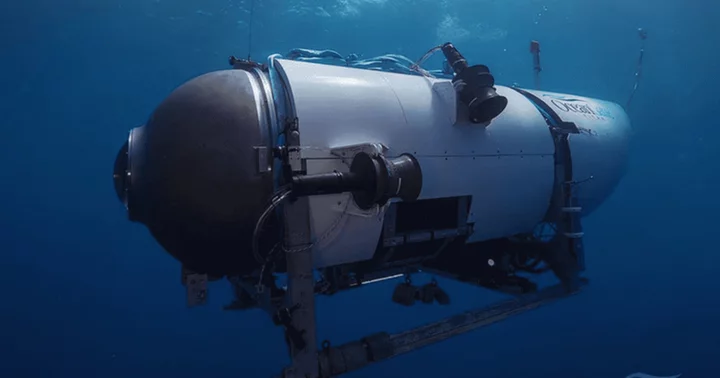NEWFOUNDLAND, CANADA: The Titan submersible’s implosion that killed all five crew members was reportedly detected by a top-secret US Navy acoustic detection system just hours after the vessel went missing during a voyage to see the Titanic wreck. The Navy deployed the system to listen for the Titan almost immediately after it lost communication with its mothership MV Polar Prince after 4 am on June 18.
The implosion sound was reportedly detected near the area where the debris from the sub was located on Thursday, June 22. Since the 1950s, the Navy has maintained the acoustic detecting system along its coast to help with early enemy submarine identification. "The US Navy conducted an analysis of acoustic data and detected an anomaly consistent with an implosion or explosion in the general vicinity of where the Titan submersible was operating when communications were lost," a senior Navy official told The Wall Street Journal in a statement.
'Information was shared with Incident Commander'
The information, which was not definitive, was immediately shared with the US Coast Guard, and a decision was made to continue the extensive international rescue effort. “While not definitive, this information was immediately shared with the Incident Commander to assist with the ongoing search and rescue mission,” the senior official continued.
This came after Coast Guard Rear Admiral John Mauger noted on Thursday that it was too soon to say whether the implosion happened at the time of last communication. The implosion was not detected by sonar buoys used by search crews, he said, which suggests it happened before they arrived and was indeed heard by the US Navy.
"We had listening devices in the water throughout and did not hear any signs of catastrophic failure from those," said Mauger, adding, "The implosion would have generated a significant, broadband sound that the sonar buoys would have picked up."
Five significant pieces of debris were discovered on Thursday by a remotely operated vehicle (ROV) 1,600 feet from the Titanic shipwreck. The coastal guard noted that the debris was “consistent with the catastrophic loss of [Titan’s] pressure chamber.” “This is an incredibly unforgiving environment down there on the sea floor and the debris is consistent with a catastrophic implosion of the vessel,” Mauger said.
'Debris is consistent with a catastrophic implosion'
Admiral Mauger also implied that the crew members, dubbed Titanic Five, would have been killed instantly after the submersible suffered a "catastrophic implosion". “This is an incredibly unforgiving environment down there on the sea floor and the debris is consistent with a catastrophic implosion of the vessel,” he said.
OceanGate CEO Stockton Rush, who piloted the vessel, British billionaire explorer Hamish Harding, French Titanic expert Paul-Henri Nargeolet, Pakistani business tycoon Shahzada Dawood and his 19-year-old son Suleman were killed in the implosion.

